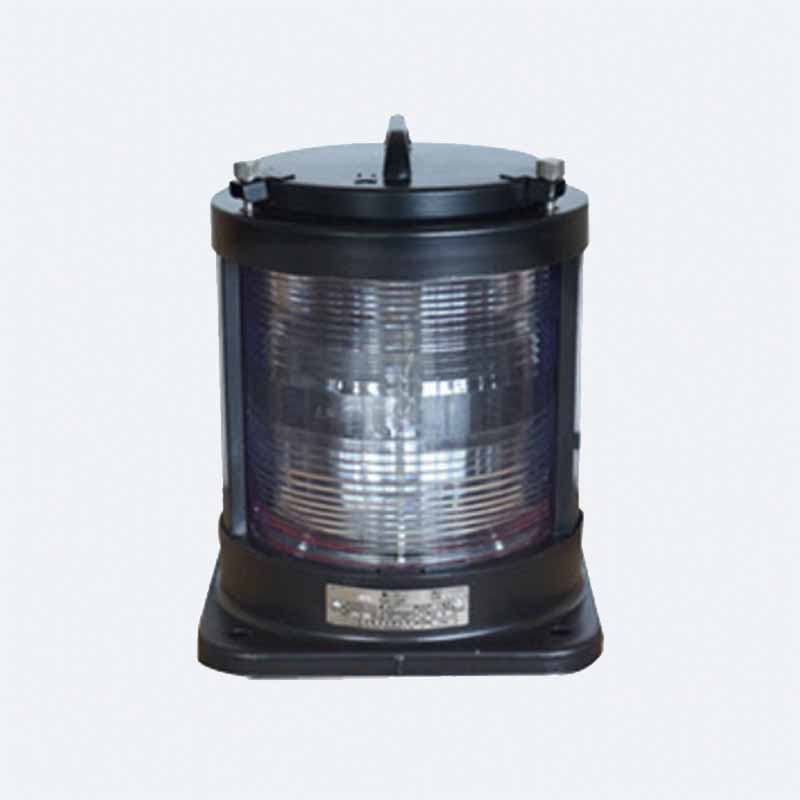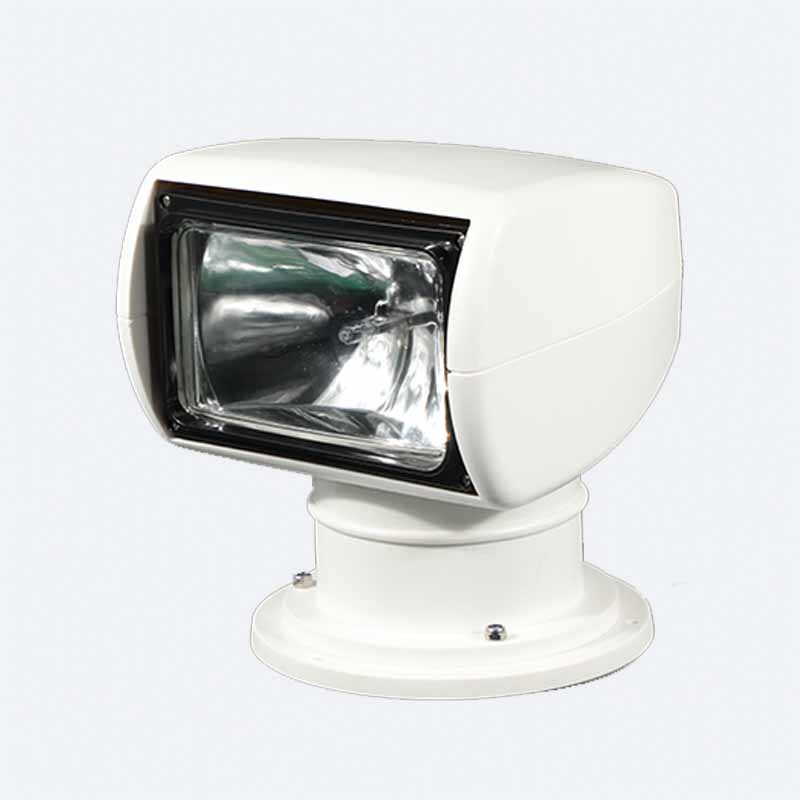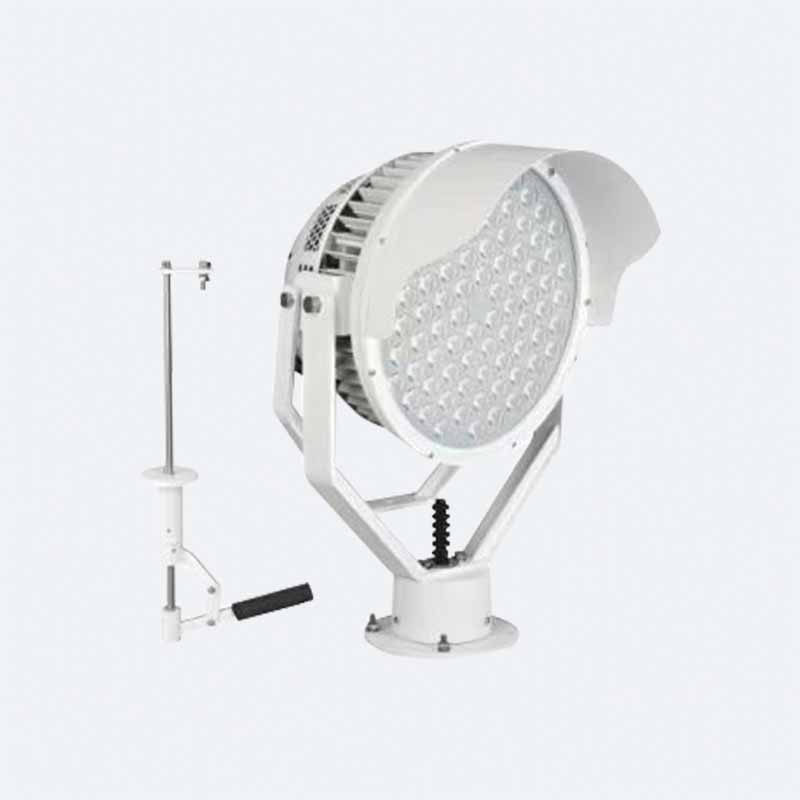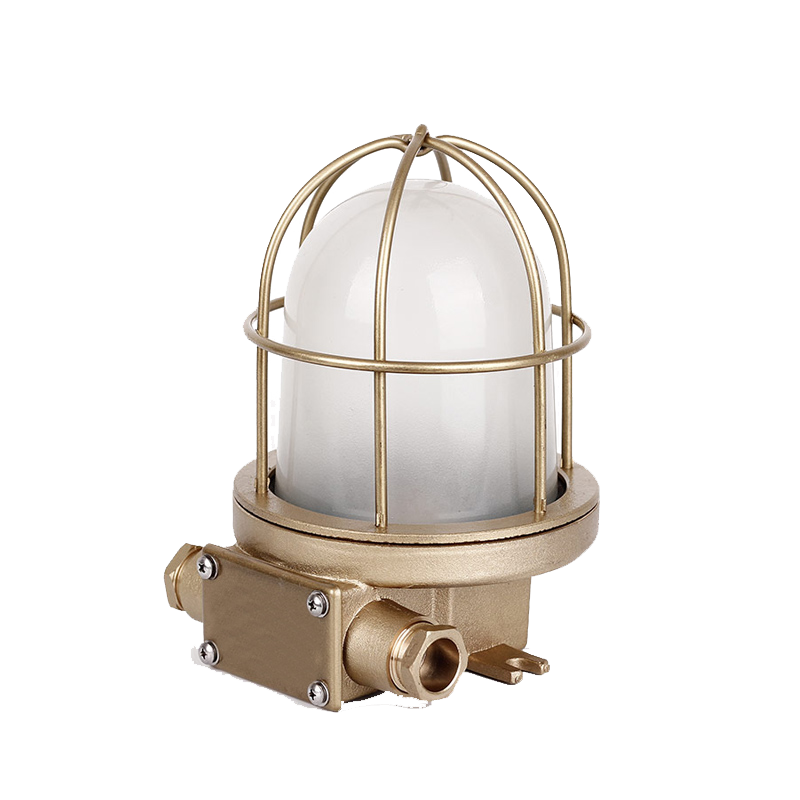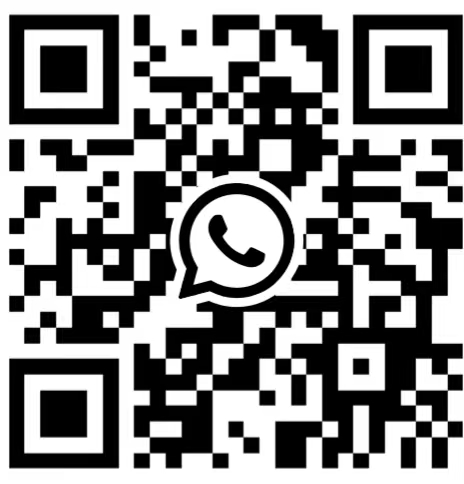1. What are the navigation lights on the ship
Navigation lights, left and right side lights, front and rear mast lights, tail lights
2. What are the ship's lights
Rotating light 1 may be mistaken for lighthouse 2 as flickering light for other ships, and for a period of time, it may not be clear about your ship's movements. 3. It may not be possible to determine your ship's approximate heading, type, size, etc. You can check his international collision avoidance regulations, navigation lights, and signal lights for many purposes. If many ships are in the same area and you have to figure out what the situation is, it's completely impossible to navigate safely.
3. What is the function of the ship's navigation lights
Navigation lights (also known as flight lights, with varying quantities for different aircraft models)
Signal light
Landing light
Searchlight (some not)
Repair light (inside the body)
Cabin lights (cockpit)
Lighting (commercial aircraft)
4. What parts do ship navigation lights include
Navigation light: It is an independent part of the ship's lighting system and an important light signal to ensure the safe navigation of ships at night. In any case, it is necessary to ensure its brightness to indicate the position, status, type, presence or absence of tugs, etc. of the vessel, in order to prevent misunderstandings from surrounding or passing vessels, leading to the occurrence of average accidents. Navigation lights consist of front mast lights, main mast lights, tail lights, left and right side lights, and front and rear anchor lights, used for night navigation of ships and to indicate their status and corresponding positions. The bridge is equipped with a dedicated navigation light control box or control board, which is powered by two circuits: the main distribution board and the emergency distribution board. The navigation light bulb is generally a 60W dual filament incandescent lamp. Each lamp is a dual set, with one as a backup and can be switched on the control box.
two
Signal light: It is a light sign for ships in various special situations, especially during nighttime navigation, and is one of the indispensable communication and communication tools. The control of signal lights is generally concentrated on the driver's bridge and requires two power supplies.
5. Marine navigation lights
Under normal circumstances, using the upper layer can easily replace the light bulb if it is broken. Temporary use of the lower layer (the upper layer is broken, and the time and situation are inconvenient for replacement). It should be double layered, as required by the convention.
6. What lighting fixtures do ship navigation lights include
Necessary lighting:
1. Strobe 1500W DMX5122, laser light 1W single green 3W single blue 3, beam light 300W. Currently, the brightest colored effects include patterns and shaking head lights. 4. Wizard light 250W is a very helpful pattern light. 5. LED full color projection light power and many other options. Modern lighting categories include home lighting, commercial lighting, industrial lighting, road lighting, landscape lighting, special lighting, etc. Home lighting emerged as the earliest incandescent bulb from the birth of electricity, later developed into fluorescent tubes, and later became energy-saving lamps, halogen lamps, halogen tungsten lamps, gas discharge lamps, and LED special material lighting. Most of the lighting fixtures were still developed with the development of these light sources, such as lamp holders, fluorescent lamp brackets, and various craft lighting fixtures. Classification of lighting fixtures: Generally speaking, the lighting fixtures used in family rooms are classified as chandeliers, ceiling lamps, wall lamps, desk lamps, floor lamps, etc. Due to their different shapes and performance, they each have their own place in a warm home. 1. Chandeliers are suitable for lighting in the living room. There are various forms of chandeliers, commonly used including cone shaped chandeliers, pointed flat chandeliers, waist shaped chandeliers, five flower round ball chandeliers, magnolia shaped chandeliers, olive chandeliers, etc.
2. Ceiling lights are suitable for lighting in living rooms, bedrooms, kitchens, bathrooms, and other areas. Commonly used ceiling lights include square cover ceiling lights, round ball ceiling lights, pointed flat round ceiling lights, half round ball ceiling lights, half flat ball ceiling lights, small rectangular cover ceiling lights, etc.
3. Wall lamps are suitable for lighting in bedrooms and bathrooms. Commonly used double ended magnolia wall lamps, double ended olive wall lamps, double ended lace wall lamps, jade pillar wall lamps, mirror front wall lamps, etc.
4. Downlights can be installed on the surrounding ceilings of bedrooms, living rooms, and bathrooms.
5. Long rod fluorescent lamps (fluorescent lamps) and non lampshades should not be used in various rooms.
6. Ordinary light bulbs should be installed in the chandelier. The ceiling lamp can be equipped with ordinary bulbs or circular or serpentine energy-saving tubes. Ordinary light bulbs should be equipped in wall lamps and desk lamps. The downlight can be equipped with colored light bulbs. Ordinary light bulbs should not exceed 40 watts; Color light bulbs should not exceed 25 watts.
7. The installation height of the pendant lamp should be at least 2.2 meters above the ground at its lowest point. The installation height of the wall lamp should be no less than 1.8 meters above the ground. The lower edge of the floor lamp shade should be at least 1.8 meters above the ground. Summary: Overall, there are many types of lighting fixtures, and with the continuous improvement of people's living standards, the requirements for decoration in daily life are also constantly increasing. Promote the emergence of lights with different shapes, allowing different locations to be decorated with different lights, making life more beautiful. 1. Snack franchise ranking? 1. Two people operate nationwide investment promotion Snack franchise ranking, 5 square meter store opening, 1-2 person operation, headquarters training, snacks Anhui Channel Network Information Technology All advertising related issues
7. Ship navigation lights and signal lights
A signal light used by aircraft or ships during night navigation to indicate their own position and direction of movement, facilitating mutual avoidance and recognition. General regulations: Install red lights on the left wing tip of the aircraft, green lights on the right wing tip, and white lights on the tail wing end; Install a red light on the left side of the helicopter fuselage and a green light on the right side
2. Wing lights, also known as WING LIGHT, are two single beam lights located on each side of the wing, illuminating the leading edge of the wing and the engine intake. Used to check for icing conditions. This light should be turned on when there is a possibility of icing, but in practical applications, it is usually turned on. 3. Navigation and flag lights NAVIAGATION LIGHT, and flag light LOGO LIGHT. Boeing aircraft fly with two switches, while Airbus aircraft fly together. The navigation lights are respectively left red, right green, and tail white installed on the wing tip and tail pursuit. Used to determine whether a flying object is an aircraft and indicate the direction of flight. The marker lights are installed on the wing tips of the horizontal stabilizer on both sides, providing illumination for the airline logo on the vertical stabilizer. The Airbus aircraft has two sets of navigation lights, and its logo lights come on when the main landing gear shock strut is compressed or the flaps extend more than 15 degrees. Navigation lights must be turned on as long as there is someone on board the aircraft. 4. Nose lights (Airbus aircraft) are installed on the front landing gear, and the two lights are called takeoff lights and taxiing lights. When placed in the T.O position, both the takeoff and taxiing lights are on, while when placed in TAXI, only the taxiing lights are on. This light is used for front lighting of taxiways and runways. It is placed in the TAXI position during aircraft taxiing and in the T.O position after entering the runway. The aircraft shuts down after takeoff. When the front landing gear is retracted, it automatically closes Taxi light (Boeing aircraft), which is installed on the shock absorber strut of the front landing gear. 1. When taxiing on the ground, it is used to illuminate the front of the aircraft. The aircraft is turned on during taxiing and immediately turned off after takeoff. 5. Landing lights are installed at the wing roots on both sides, two on the left and two on the right. Used to illuminate the runway during takeoff and landing. This lamp has a high power and generates high heat during use, so it requires high-speed airflow for cooling. Therefore, it can only be opened before takeoff on the ground. Before takeoff and taxiing, the aircraft is turned on, and after takeoff, it is turned off. During the final approach phase, the aircraft is turned on, and after landing, it is turned off. 6. The runway departure light is also known as the turn signal or runway edge light. Boeing RUNWAY TAKEOFF LIGHT, Airbus RUNWAY TURN. Installed on the shock absorber strut of the front landing gear, one on the left and one on the right, providing lighting on both sides of the nose. Used for illuminating taxiways and runway edges. Close after takeoff. Automatically closes when the front landing gear is retracted. After starting the engine, it is turned on and used to signal ground personnel to prepare to slide out at night. The high brightness white strobe light, also known as the high brightness white anti-collision light, STROBE LIGHT. This light is installed at the front and rear of the wing and one at the tail cone. For Boeing aircraft, one is installed at the rear tips of the left and right wings, with a total of three at the tail cone. For Airbus aircraft, there are five at the front and rear wing tips and tail cones of the left and right wings. The purpose is to prevent aircraft collisions. This light bursts and flashes at a certain frequency, with high brightness, depending on the controller adapted to the model. Please note that this light can only be turned on after obtaining permission to enter the runway! Above FL100, this light can be turned off. Turn off this light before landing off the runway!
The normal order of using external lights on an aircraft should be as follows: 1. After turning on the main power switch, the aircraft should be turned on by the pre flight maintenance - navigation lights, and the wing lights and logo lights should be turned on as needed; 2. Turn on the red anti-collision light when the aircraft is launched; (Ground testing also requires turning on) 3. After the aircraft starts the engine, turn on the turn signal and prepare to slide out; 4. After obtaining permission to slide out, turn on the sliding light to start sliding; 5. After entering the runway, use white anti-collision lights; 6. After obtaining takeoff permission, turn on the landing lights for takeoff; 7. After leaving the ground, turn off the sliding and turning lights; (It can automatically turn off after retracting the landing gear) 8. When the height rises to 10000 feet or above, turn off the white flashing light; 9. At least keep the red flashing lights and navigation lights on when cruising; Turn on the logo lights and wing lights as needed; 10. Turn on the white flashing light when the aircraft descends below 10000 feet; 11. Turn on the taxiing lights after the aircraft puts down the landing gear; 12. Turn on the landing lights during the final approach phase; 13. After grounding, turn on the turn signal, turn off the landing light, and turn off the white flashing light; 14. Turn off the sliding lights and red flashing lights after sliding in place; 15. If the aircraft no longer has flight tasks to stop overnight, the post flight maintenance personnel will turn off the navigation lights and then turn off the aircraft's main power to leave the aircraft! The navigation lights of a ship are used to display the sailing or berthing status of the ship, which can indicate the direction of the ship's navigation and the size of the ship at night. All ships sailing on oceans, rivers and lakes must strictly comply with the number and type of navigation lights specified in the Specifications for Seagoing Ship Signaling Equipment and the Collision Avoidance Rules of the People's Republic of China (1991) (revised by JHF [2003] 357 issued by the Ministry of Communications Order [1991] No. 30).
Navigation lights include mast lights, side lights, tail lights, bow lights, ambient lights, flashing lights, and mast top lights. The arrangement requirements are as follows: Mast top: A signal light placed above the ship's mast or above the centerline of the bow and stern, displaying uninterrupted light within a horizontal arc of 225 degrees. Its installation should ensure that the light is displayed from the front of the ship to 22.5 degrees behind each side. Side lights: The red lights on the port side and the green lights on the starboard side, located on the left and right sides of the highest deck of the ship, each display uninterrupted light within a horizontal arc of 112.5 degrees. Their installation should ensure that the light is displayed from the front of the ship to within 22.5 degrees behind each side. The side light shield facing the light surface should be coated with matte black paint. The height of the shutter should be at least equal to the height of the lamp. Barges with a length of over 80 meters should be equipped with red and green lights at the bow and stern respectively. Taillight: A white light placed in the center of the stern of a ship. Display uninterrupted light within a horizontal arc of 135 degrees, and the device should ensure that the light is displayed from the rear of the ship to within 67.5 degrees on each side. The height of the mast light should be as horizontal as possible with the side light, but not higher than the side light. Bow light: refers to a white light installed in the bow of the pushed barge, which displays uninterrupted light within a 180 degree horizontal arc. Its installation should ensure that the light is displayed from the front of the ship to 90 degrees on each side, but not higher than the side light. Surround light: A signal light that displays uninterrupted light within a 360 degree horizontal arc. Red green flashing light: It is a flashing ring light installed above the gangway light, with a frequency of 50 to 70 flashes per minute. Motor boats with a length of less than 12 meters can also use red and green flashlights instead of red and green flashing lights, but the lights should be kept bright and the colors should be clear and distinct. Yellow flashing light: A yellow flashing ambient light installed on the mast of a fast ship, with a frequency of 50 to 70 flashes per minute. Red and green light combination light: installed at the position of the mast light, displaying red light within 22.5 degrees from the front of the ship to the port side, green light within 22.5 degrees from the starboard side, and white light within 67.5 degrees per chord from the rear of the ship. Mast top light: also known as "anchor light". White light, mounted on the top of the mast. Horizontal illumination angle of 360 degrees, ambient illumination.
The regulations regarding signal lights should be observed from sunset to sunrise. In the event of poor visibility during the day, relevant signals can also be displayed. During the display time of the signal light, any light that may be confused with the specified signal light or weaken its display performance shall not be displayed. The signal lights should be displayed in the most visible position and comply with the technical requirements of the inland river collision avoidance rules. Unless otherwise specified for inland river collision avoidance, when several signal lights and signal types are grouped together, they should be displayed vertically. Motor boats, fleets, engineering ships, patrol boats, navigation mark boats, and dangerous cargo ships on board should display ship signals according to the following requirements. 1、 Unless otherwise specified, when a single motor ship is sailing, it should display one white light mast light, one red and green light side light, and one white light tail light. For motor boats with a length of over 50 meters, another white light mast light should also be displayed on the rear mast; Except for speedboats, motor boats with a length of less than 12 meters may display one white ambient light and one red and green combined light when conditions are not met, or one red, white, and green three color light to replace the prescribed signal lights. When the following ships are sailing, in addition to displaying the previously specified signal lights, they should also: 1. The fast ship should display one yellow flashing light during the day and night. 2. Seaboats with limited draft display three red ambient lights at night and one cylindrical size during the day. 3. At night, the Hengjiang Ferry displays one green ring light at both ends of the mast's horizontal extension, and during the day, a double arrow head type is hung on one side of the mast's horizontal extension. 2、 The fleet on board should display not only side lights and tail lights, but also in the form of towing; (1) When towing or dragging the right light to push the ship, two white mast lights will be displayed. (2) When pushing the ship or raft, three white light masts will be displayed. When it is difficult for tugboats to display the above signal lights, they can be displayed on the most suitable ship in the fleet. (3) When towing a raft, display one self, green, and white mast light each. (4) For tugboats towing ships or rafts, in order to facilitate the steering of the towed ships or rafts, another white light can also be displayed at the rear of the chimney or mast, higher than the tail light, but the light must not be exposed before it is straight ahead. 2. When a ship or raft is being towed or pushed by a crane, the following signal lights should be displayed: (1) The ship being towed or pushed by a crane should display red and green side lights. When grouped into a multi row numerical formation, only red light side lights should be displayed in the leftmost row of ships, and only green light side lights should be displayed in the rightmost row of ships. The bow of the first ship in the pushing fleet should display a self illuminating bow light, which should not be exposed behind the bow. When the stern of the pushed vessel exceeds the bow of the towing vessel, a white tail light should also be displayed. The last row of the towing fleet should display white tail lights. (2) When a ship with a length of over 30 meters is towed in a single row and one row, each ship can display one white light ambient light instead of the red and green light sidelights. (3) Manpower boats, sailboats, and objects should display a white ambient light when being towed or pushed, and the light should not be exposed after being pushed horizontally. When the grouping is in a multi row sequence, it is displayed in the outermost column on the left and right.
3、 When the engineering ship has not entered the construction site or has withdrawn from the construction site, it should display the signal specified by the general ship. When entering the construction site, the following lights and types should be displayed; 1. When the engineering ship is fixed at the construction site, three ambient lights are displayed at night, and their connecting lines form an equilateral triangle with a pointed upward direction. The top of the triangle is a red ambient light, and the two ends of the bottom edge are white ambient light on the navigable side and red ambient light on the non navigable side. During the day, one horn type is hung at each end of the mast, with a circular ball on the navigable side and a cross shaped horn on the non navigable side. 2. When a self-propelled engineering ship is underway for construction, in addition to displaying the signal light of the motor ship during navigation. At night, one red, white, and red ring light should be displayed, and during the day, one circular, diamond, and ball shaped signal should be hung. When the engineering ship being towed by a tugboat is under construction, in addition to displaying the signal light according to Article 29, it should also display the same signal light and signal type as when the self-propelled ship is under construction. 2. The mud discharge pipe extended by the engineering ship should display a white light at the head and tail of the pipe every 50 meters. When a diver is working underwater on a ship, a red light should be displayed at night to illuminate it, and an "A" signal flag should be hung during the day. 4、 When performing official duties, sea patrol boats and navigation mark boats should display side lights, tail lights, and a red flashing rotating light at night. During navigation, the navigation mark boat should display two side lights, tail lights, and green ambient lights at night; Two green ambient lights are displayed during parking. 5、 Dangerous transport ships carrying explosive, flammable, highly toxic, and radioactive dangerous goods should display a red light ring light at the transverse extension of the mast at night, and hang a "B" signal flag during the day, in addition to displaying the signal of a general ship during berthing, loading, unloading, and navigation. Meanwhile, Peng Gaogong emphasized that crew members should regularly inspect the ship's navigation lights. The inspection methods include: 1. The setting of navigation lights and signal lights should comply with regulations; 2. The navigation light control box is powered by two power sources. One of the circuits must be powered by the main distribution board or emergency distribution board, and the two power conversion switches should be located on the control box. 3. When the main power supply uses a battery, only one power supply can be set. 4. The navigation light control box should be equipped with a sound and light alarm signal device for each navigation light to emit a fault. When small ships, navigation lights, and signal lights are controlled by the same control box, only light alarm signals are allowed to be set. 5. Each navigation light (on the control box) should be equipped with a separate control switch, fuse, and opening/closing indicator device, and should be equipped with a nameplate or logo. 6. The signal light is centrally controlled and protected by a signal light control box located in the driver's cab. 7. For unmanned barges, non self-propelled engineering ships, barges, and other unmanned vessels, their signal light control boxes are allowed to be installed in duty or easy to manage locations.
8. What do ship navigation lights include
Navigation beacon light ā O d ē Ng]
Traffic lights installed on certain navigation aids
Navigation light is a type of traffic light installed on certain navigation aids, which emits a specified light color and flash frequency (frequency can be 0) at night, reaching the specified illumination angle and visibility distance, and providing guidance for ships traveling at night.
Chinese name
Beacon light
Ensure safe navigation of ships at night.
9. What is the light that guides the ship's navigation called
On aircraft: red anti-collision light: also known as beacon light EACON LIGHT or BEACON. On tanks: The headlights used on tanks are similar to those on cars, such as hernia lights.
On the ship: There are navigation lights, tail lights, mast lights, anchor lights, as well as various signal lights and searchlights on the deck.
There are cabin lights in the cabin for lighting during loading and unloading operations, as well as lighting lights for normal lighting.
Navigation lights and signal lights have two sets of power sources, 24 volts and 220 volts (or 110 volts), and each has two sets of light bulbs that can be individually and interchangeably used. There are usually two sets of lights in the cabin, each powered by one type of power source.
10. What are the lights for sea navigation called
Actual use of offshore lighthouses:
1. Escort lighting
A lighthouse is a tower shaped illuminated navigation mark built near key parts of the waterway, which is a fixed navigation mark. Its basic function is to guide ships to navigate or indicate dangerous areas (commonly used to mark dangerous coasts, dangerous sandbars or reefs, and the waterway leading to the port mouth);
2. Geographic coordinates
With the rapid development of science and technology, and the establishment of a comprehensive navigation system consisting of radar responders, DGPS systems, and AIS ship automatic identification systems, the navigation function of lighthouses has been increasingly weakened, and their navigation value is decreasing. However, they have potential historical and cultural value and have become a popular cultural and cultural coordinate among countries;
3. Military defense
The lighthouse is known as a beacon tower on the sea, and it was also used for military purposes in the past to carry out coastal observation and prevent illegal immigration. Generally, defense facilities such as turrets and castles are located near the lighthouse;
4. Swear sovereignty
In disputed waters, lighthouses, checkpoints, boundary markers, etc. are often regarded as symbols of sovereignty.
A lighthouse is a tower shaped illuminated navigation mark built near a key part of the waterway. A lighthouse is a fixed navigation mark used to guide ships or indicate dangerous areas. The modern large lighthouse structure has good living and communication facilities inside, which can accommodate management personnel, but there are also important lighthouses that are left unattended. According to different needs, set different colors of lighting and different types of fixed light or flash. The range of the light is generally 15-25 nautical miles.


